Creeps and Trolls: Dealing with Harassment on Instagram
In today's digital age, social media platforms like Instagram have become integral to our lives. They allow us to connect, share, and express ourselves. However, with this connectivity comes a darker side: online harassment. This article explores the issue of online harassment on Instagram, offering insights into recognizing, managing, and preventing unwanted attention, as well as strategies for maintaining a positive online experience.
Online harassment encompasses various forms of abusive behavior, including trolling and stalking. Recognizing these behaviors is crucial for users to protect themselves and foster a safer online environment. The anonymity of the internet can embolden individuals to act in ways they might never consider in face-to-face interactions. This disconnect can lead to a range of negative experiences for those targeted. Understanding the nuances of online harassment is the first step in combating it.
Creeps and trolls often exhibit specific behaviors that can be identified. These individuals thrive on attention, often using tactics that provoke, annoy, or intimidate their targets. Common traits include:
- Anonymous Accounts: Many trolls hide behind fake profiles, making it difficult to trace their actions.
- Persistent Messaging: Creeps may send repeated unsolicited messages, often crossing boundaries.
- Public Shaming: Some individuals may attempt to humiliate others in public forums or comment sections.
By being aware of these tactics, users can better protect themselves and take action when necessary.
Harassment can take many forms, from unwanted messages to public shaming. Understanding these types can empower users to respond effectively and seek help when necessary. Here are some of the most common forms:
- Cyberstalking: This severe form of online harassment involves persistent and targeted attacks. Recognizing the signs early can help victims take appropriate action to protect themselves.
- Impersonation: Creating fake accounts to deceive or harass others can lead to significant emotional distress, making it important for users to know how to report and block such accounts.
Being aware of warning signs can help users identify when they are being targeted. Some red flags include:
- Receiving repeated unwanted messages.
- Noticing a sudden increase in negative comments on posts.
- Feeling uneasy about someone’s online behavior.
By staying vigilant and recognizing these signs, users can take proactive measures to protect themselves.
Managing harassment on Instagram requires a combination of personal strategies and platform tools. Here are some practical tips for users to effectively handle unwanted attention:
Adjusting privacy settings is a crucial step in safeguarding personal information. Users can customize their settings to limit exposure to potential harassers. For instance, switching to a private account can restrict who sees your posts and stories, while also allowing you to approve followers. This simple act can significantly reduce unwanted interactions.
Blocking and reporting tools are essential for dealing with trolls. Instagram provides users with the ability to block accounts that are harassing them, preventing any further communication. Additionally, reporting abusive behavior helps Instagram take action against violators, contributing to a safer community. Remember, utilizing these features is not just about protecting yourself; it’s about fostering a healthier online environment for everyone.
Finding support from friends, family, or professional resources can be vital when dealing with harassment. It’s important to remember that you are not alone in this experience. Reaching out and sharing your experiences with trusted individuals can provide relief and guidance.
Creating a network of supportive friends and allies can provide emotional strength. Surrounding yourself with people who understand what you’re going through can make a world of difference. Consider discussing your experiences openly with those you trust, as their support can be invaluable during tough times.
In some cases, professional help may be necessary. Resources such as counseling and legal support are available for those experiencing severe harassment. It’s crucial to know that seeking help is a sign of strength, not weakness. Professionals can offer strategies and tools to help you navigate these challenging situations.
Q: What should I do if I receive a threatening message on Instagram?
A: Immediately report the message to Instagram and consider blocking the user. If you feel unsafe, reach out to local authorities.
Q: Can I prevent harassment before it happens?
A: Yes! Adjusting your privacy settings and being cautious about who you interact with can help minimize the risk of harassment.
Q: How do I find support if I feel overwhelmed?
A: Talk to friends or family members you trust, or consider seeking professional help from a counselor or support group.
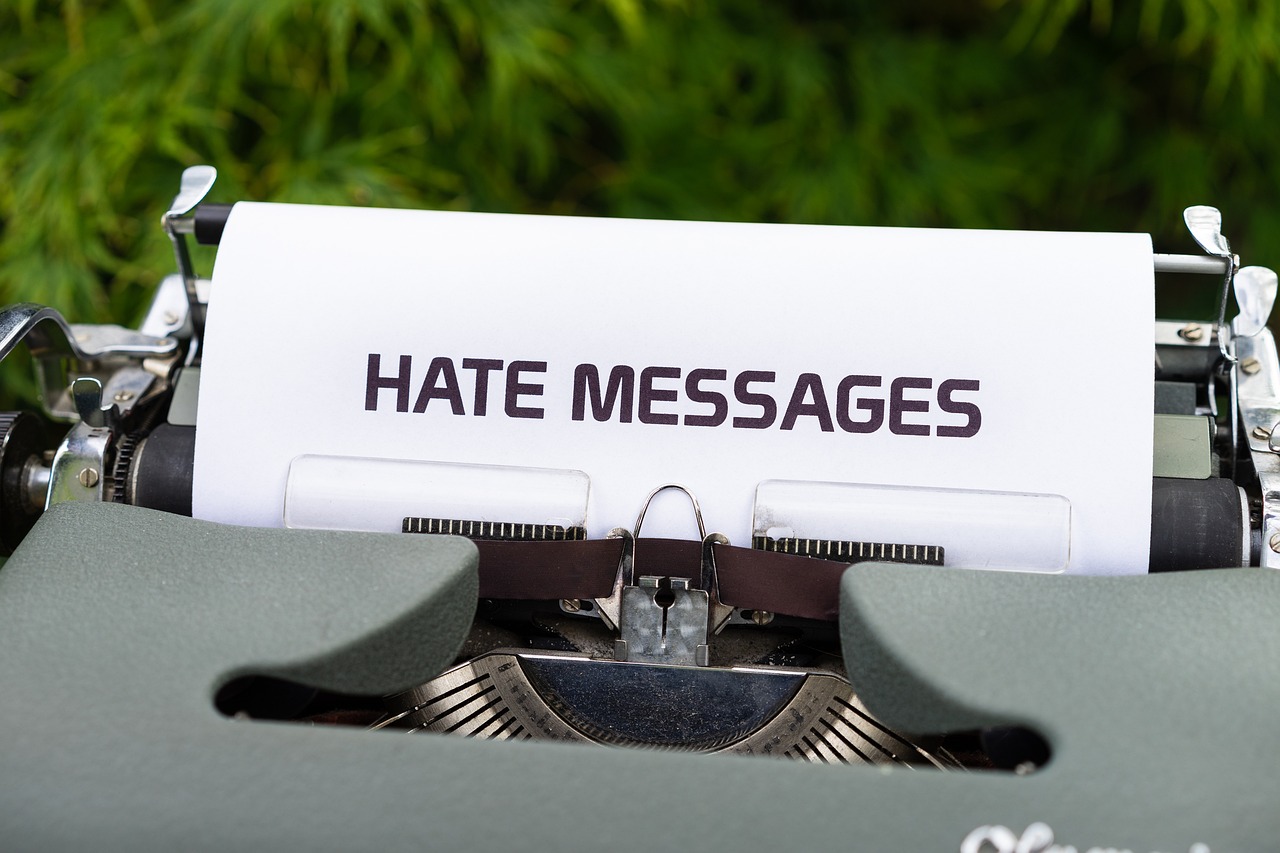
Understanding Online Harassment
This article explores the issue of online harassment on Instagram, offering insights into recognizing, managing, and preventing unwanted attention, as well as strategies for maintaining a positive online experience.
Online harassment is a pervasive issue that affects countless users across various platforms, with Instagram being no exception. It encompasses a wide range of abusive behaviors, such as trolling, stalking, and even impersonation. Understanding what constitutes online harassment is the first step towards protecting yourself and fostering a safer digital environment. When we think of harassment, we often picture physical confrontation, but in the digital age, the threats can be just as damaging, albeit less visible. It's like being haunted by a ghost that lurks behind your screen, waiting for the perfect moment to strike.
To truly grasp the complexities of online harassment, it's essential to recognize that it can manifest in many forms. For instance, you might receive unwanted direct messages that make you uncomfortable or face public shaming through derogatory comments on your posts. The anonymity provided by the internet often emboldens individuals to act in ways they wouldn't dare in person. This creates a toxic atmosphere where users feel vulnerable and unsafe. Understanding these behaviors is crucial for users to protect themselves and foster a safer online environment.
Here are some common forms of online harassment:
- Trolling: This involves posting inflammatory or off-topic messages in an online community, aiming to provoke emotional responses.
- Stalking: Persistent and unwanted attention, often characterized by monitoring someone’s online activities.
- Impersonation: Creating fake accounts to deceive or harass others, leading to significant emotional distress.
- Public Shaming: Using social media platforms to ridicule or belittle someone, often leading to severe emotional consequences.
Recognizing these behaviors is crucial, as it empowers users to take action before situations escalate. Just like a smoke alarm alerts you to a fire before it consumes your home, being aware of the signs of online harassment can help you act swiftly to protect your digital space. It's essential to remember that no one should suffer in silence. If you find yourself a target of harassment, knowing the types of abusive behavior can help you navigate the murky waters of online interactions and seek help when necessary.
In summary, understanding online harassment is about recognizing the various forms it can take and acknowledging the impact it has on individuals. By being informed, users can better equip themselves to combat unwanted attention and foster a supportive community on platforms like Instagram.
1. What should I do if I receive a harassing message on Instagram?
First, do not engage with the harasser. Instead, use the blocking feature to prevent them from contacting you again. Additionally, report the message to Instagram to help protect others.
2. How can I tell if I'm being stalked online?
Signs of cyberstalking include receiving repeated unwanted messages, noticing someone monitoring your online activities, or feeling unsafe due to someone’s persistent attention.
3. Can I take legal action against an online harasser?
Yes, in severe cases of online harassment, legal action may be warranted. It's advisable to document all incidents and consult with a legal professional to understand your options.
4. Are there resources available for victims of online harassment?
Absolutely! Many organizations offer support and resources for individuals facing online harassment, including counseling services and legal advice. Reach out to trusted friends or professionals for assistance.

Identifying Creeps and Trolls
In the vast digital landscape of Instagram, it can sometimes feel like you're navigating a minefield of personalities. Among the sea of friendly faces, you may encounter a few who exhibit unsettling behaviors—these are the creeps and trolls. Understanding how to identify them is your first line of defense against unwanted attention. So, what exactly should you be looking for?
Creeps and trolls often share some common traits and tactics that can help you spot them before they become a problem. For instance, they may engage in unwanted messaging, sending you direct messages that feel invasive or inappropriate. These messages can range from overly flirty comments to outright harassment, and they often make you feel uncomfortable. If someone is persistently reaching out despite your lack of interest, that’s a major red flag.
Another tactic used by these individuals is public shaming. This can manifest in the form of derogatory comments on your posts, intended to embarrass or belittle you in front of your followers. Imagine sharing a beautiful moment from your life only to have someone tear it down with a nasty comment—it's disheartening, to say the least. It's crucial to recognize that this is not just a harmless joke; it’s a tactic used to undermine your confidence and create a hostile environment.
Additionally, trolls often hide behind the veil of anonymity. They may create fake profiles or use pseudonyms to shield their identity while they unleash their negativity. This impersonation can lead to significant emotional distress, as it can feel like a personal attack from someone who knows you. If you notice an account that mimics your friends or family, or seems suspiciously fake, it’s worth investigating further. Always trust your instincts—if something feels off, it probably is.
To help you better understand these behaviors, here’s a quick overview of some common traits of creeps and trolls:
| Behavior | Description |
|---|---|
| Unwanted Messaging | Sending inappropriate or invasive messages repeatedly. |
| Public Shaming | Commenting negatively on your posts to embarrass you. |
| Fake Profiles | Using anonymity to harass or impersonate others. |
By recognizing these behaviors early on, you can take proactive measures to protect yourself. Remember, the online world should be a space where you feel safe to express yourself. If you ever feel uncomfortable or threatened, don't hesitate to take action. Block and report these accounts, and don’t forget to reach out to your support network for help. After all, you deserve to enjoy your Instagram experience without the shadow of creeps and trolls lurking around.
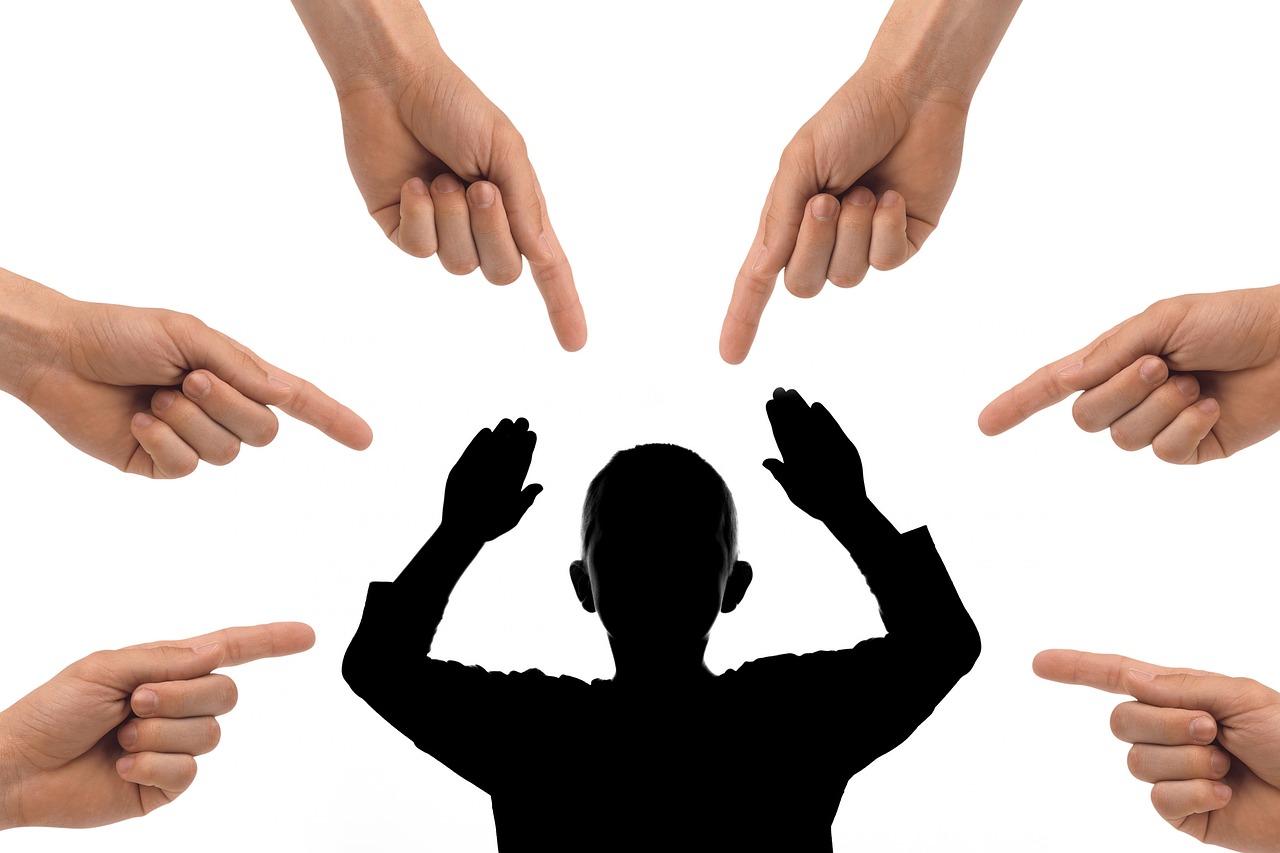
Types of Harassment
Harassment on Instagram manifests in various forms, each with its own unique challenges and emotional toll. Understanding these types is essential for users to effectively respond and seek help when necessary. One of the most common forms is unwanted messaging, where individuals receive repeated, unsolicited messages that can range from annoying to threatening. This type of harassment can feel like a relentless storm of negativity, often leaving victims feeling vulnerable and exposed.
Another prevalent type is public shaming. This occurs when someone uses the platform to criticize, insult, or belittle another user in a public forum. Imagine being called out in front of your peers; it’s humiliating and can lead to severe emotional distress. Public shaming often escalates quickly, with other users joining in, which can feel like being trapped in a digital mob.
Additionally, there’s the insidious issue of cyberstalking. This severe form of harassment involves persistent and targeted attacks, where an individual follows, monitors, or harasses someone online. Cyberstalking can escalate to the point where the victim feels they have no safe space, even in their own home. Recognizing the signs early, such as receiving repeated unwanted contact or having personal information shared without consent, can empower victims to take action before the situation worsens.
Impersonation is another alarming tactic used by harassers. This involves creating fake accounts to deceive or harass others, often leading to significant emotional distress. Imagine someone pretending to be you, posting inappropriate content, or sending messages that could tarnish your reputation. It’s crucial for users to know how to report and block such accounts promptly to mitigate this type of harassment.
To sum up, understanding these various forms of harassment is not just about recognizing the behaviors; it's about empowering yourself with the knowledge to respond effectively. Whether it’s unwanted messages, public shaming, cyberstalking, or impersonation, being aware of these tactics can help you navigate your online presence with confidence and security. Remember, if you ever feel overwhelmed, reaching out for support is a strong and important step.
- What should I do if I receive unwanted messages on Instagram?
First, consider blocking the user. You can also report the messages to Instagram, which can take action against the offending account.
- How can I tell if I am being cyberstalked?
Signs include receiving repeated unwanted messages, being followed by the same user across different platforms, or having personal information shared without your consent.
- What steps can I take to protect my privacy on Instagram?
You can adjust your privacy settings to limit who can see your posts and send you messages. Make sure your account is set to private and only accept follower requests from people you know.
- Is it necessary to involve law enforcement in cases of severe harassment?
If you feel threatened or unsafe, it’s important to document the harassment and consider contacting law enforcement for assistance.
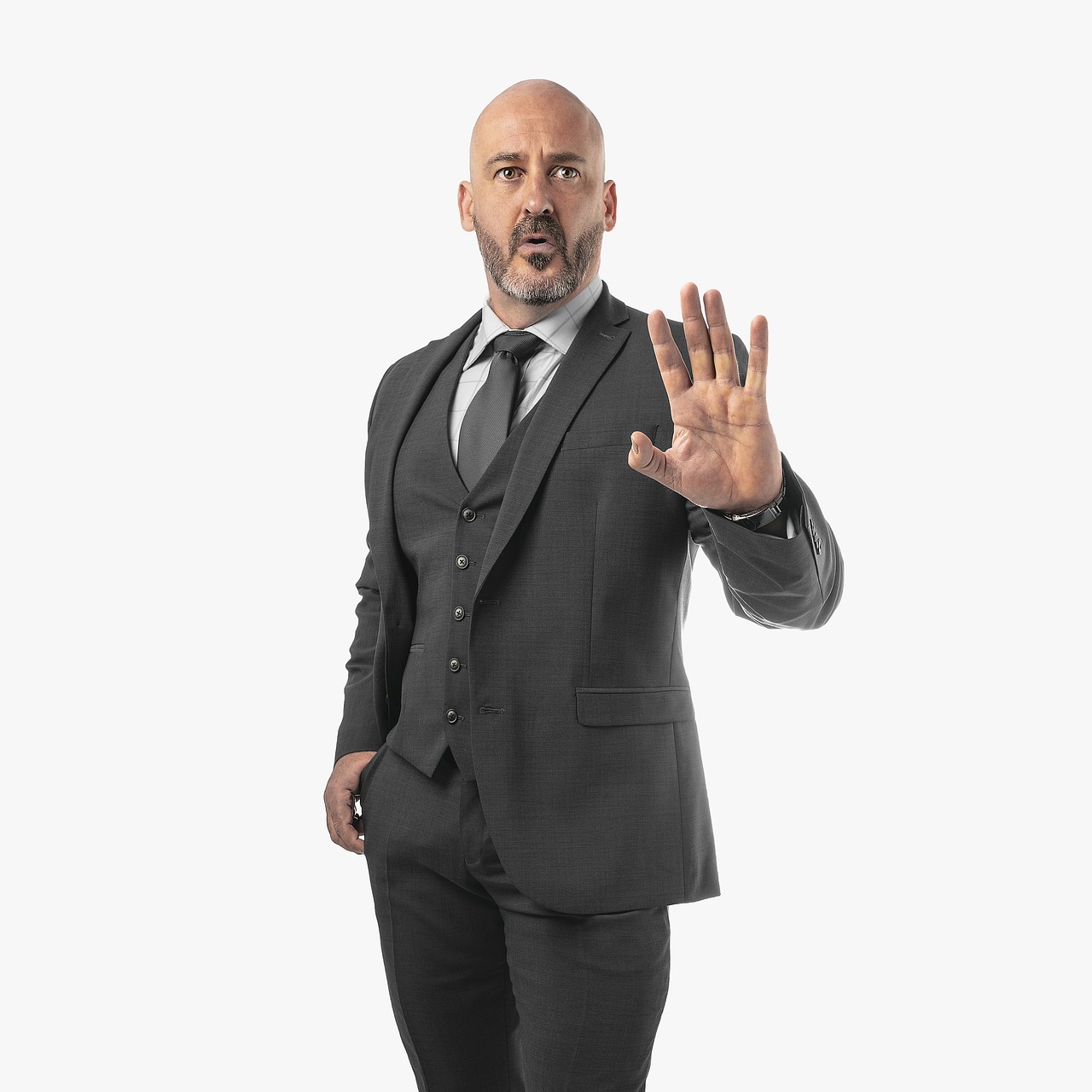
Cyberstalking
Cyberstalking is a particularly alarming form of online harassment that can leave individuals feeling vulnerable and unsafe. Imagine someone lurking in the shadows of your digital life, watching your every move, and invading your privacy without your consent. This behavior is not just annoying; it's a serious violation of personal boundaries and can escalate quickly if not addressed. Cyberstalkers often use various tactics to maintain control over their victims, including incessant messaging, monitoring social media activity, and even threatening behavior.
One of the most insidious aspects of cyberstalking is its ability to make victims feel isolated. The constant feeling of being watched can lead to anxiety, depression, and a sense of helplessness. Recognizing the signs of cyberstalking early is crucial for taking appropriate action. These signs may include:
- Receiving repeated unwanted messages or comments.
- Noticing someone tracking your online activities, such as likes, shares, or comments.
- Experiencing threats or intimidation via digital platforms.
- Having personal information shared without your consent.
Understanding these warning signs can empower you to take control of your online experience. If you find yourself in a situation where you suspect you're being stalked online, it's essential to document everything. Keep records of messages, screenshots of interactions, and any relevant information that could be useful if you decide to report the behavior.
Moreover, it's important to know that you're not alone in this fight. Many resources are available to help victims of cyberstalking. From local law enforcement to dedicated hotlines and support groups, there are avenues to seek help and advice. Remember, your safety is paramount, and taking action against cyberstalking is not just about protecting yourself; it's about reclaiming your peace of mind.
In conclusion, cyberstalking can be a frightening experience, but awareness and proactive measures can help mitigate its effects. The digital world should be a space for connection and creativity, not fear and intimidation. By recognizing the signs, documenting incidents, and seeking support, you can take back control of your online life.
Q: What should I do if I suspect I'm being cyberstalked?
A: If you suspect you're being cyberstalked, start by documenting all interactions. Report the behavior to the platform and consider reaching out to local authorities if you feel threatened.
Q: Can I block a cyberstalker on social media?
A: Yes, most social media platforms have blocking features that allow you to prevent the stalker from contacting you or viewing your profile.
Q: Is cyberstalking illegal?
A: Yes, cyberstalking is illegal in many jurisdictions. Laws vary, but many places have specific laws against online harassment and stalking.
Q: How can I protect my privacy online?
A: You can protect your privacy online by adjusting your privacy settings on social media, being cautious about what you share, and regularly reviewing your friend lists and followers.
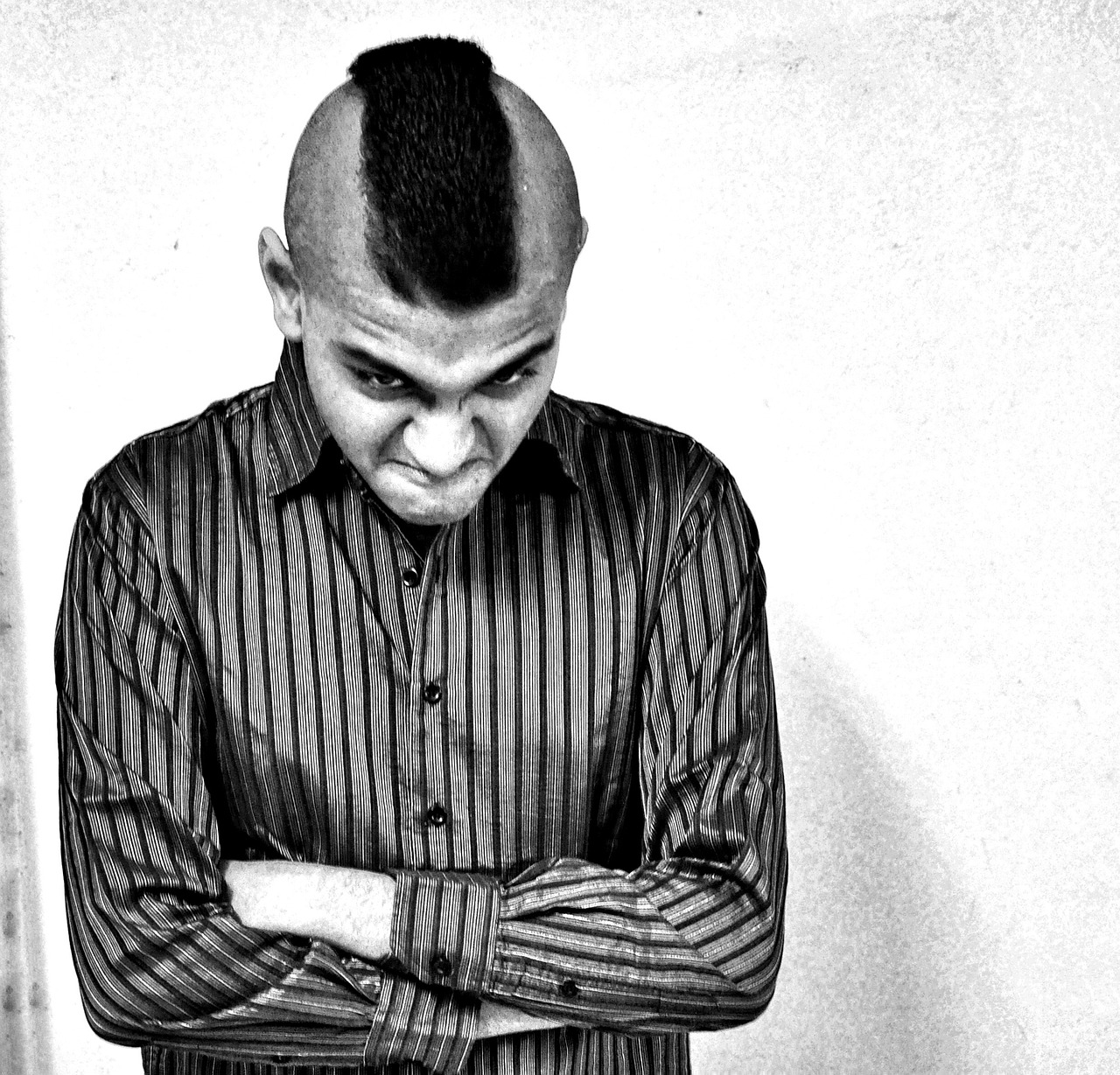
Impersonation
Impersonation on Instagram can feel like a scene straight out of a suspense thriller, where the villain lurks in the shadows, ready to strike. It's a tactic that involves creating fake accounts to deceive, harass, or manipulate others. Imagine waking up one day to find someone using your name, photos, and even your personal details to create a false identity. It’s unsettling, right? This type of harassment can lead to significant emotional distress, and it’s crucial for users to recognize the signs and know how to respond.
Often, impersonators aim to tarnish reputations, spread false information, or engage in malicious activities under the guise of someone else. They might send messages to your friends, post inappropriate content, or even solicit money—all while hiding behind a mask of deception. The emotional toll this can take is immense, making it essential for users to be vigilant and proactive.
Here are some common signs that might indicate an impersonation attempt:
- Accounts with similar usernames or profile pictures as yours.
- Messages from accounts claiming to be you, asking for personal information.
- Friends reporting suspicious accounts that seem to mimic your profile.
Knowing how to report and block such accounts is vital. Instagram provides tools to help users protect themselves. If you suspect someone is impersonating you, here’s what you can do:
- Go to the impersonating account's profile.
- Tap on the three dots in the upper right corner.
- Select "Report" and follow the prompts to report the account as impersonating you or someone else.
Additionally, it’s wise to inform your friends and followers about the impersonation. Let them know that they should be cautious of any suspicious messages or requests coming from accounts that look like yours. By raising awareness, you can help safeguard not only yourself but also your community.
In conclusion, impersonation is a serious issue that can lead to a cascade of problems, from emotional distress to potential financial loss. By staying informed and taking the necessary steps to protect yourself, you can help create a safer online environment. Remember, if you ever feel overwhelmed, don’t hesitate to reach out for support from friends, family, or professionals who can help you navigate through these troubling waters.
- What should I do if I find an impersonating account? Report the account to Instagram immediately and inform your friends about the situation.
- Can I recover my account if it has been hacked or impersonated? Yes, follow Instagram's recovery process and provide any necessary information to verify your identity.
- How can I protect my account from impersonation? Use strong passwords, enable two-factor authentication, and be cautious about sharing personal information online.

Recognizing Warning Signs
Recognizing the warning signs of online harassment is essential for protecting yourself on platforms like Instagram. Just like a smoke detector alerts you to danger, being aware of these signs can help you take action before a situation escalates. Often, the initial signs can be subtle, making it crucial to stay vigilant. For instance, if you start receiving an influx of unsolicited messages or comments, it can be a red flag. These messages might range from overly complimentary to downright creepy, and they often come from accounts that seem suspicious or lack genuine engagement.
Another warning sign is when someone begins to follow you excessively or interacts with your posts in a way that feels invasive. If you notice a particular user liking every single one of your photos or leaving comments that make you uncomfortable, it’s time to take a step back and assess the situation. Additionally, if a user begins to share personal information about you that you haven’t disclosed publicly, this could indicate that they are stalking your profile and crossing boundaries.
Here are some common warning signs to look out for:
- Incessant Messaging: If someone is bombarding you with messages, especially if they become aggressive or demanding, it’s a clear sign of harassment.
- Negative Comments: Pay attention to any derogatory remarks or insults that seem targeted at you, as this can indicate trolling behavior.
- Fake Accounts: Be cautious of accounts that seem to have no followers or posts, especially if they reach out to you in a personal manner.
- Threatening Language: Any form of threats, whether direct or implied, should be taken seriously and reported immediately.
Furthermore, it’s important to trust your instincts. If something feels off about a conversation or interaction, don’t dismiss that feeling. Just like in the real world, your gut can often sense danger before you consciously realize it. If you find yourself feeling anxious or uncomfortable after interacting with a particular user, consider taking a break from your account or adjusting your privacy settings.
In summary, recognizing these warning signs can empower you to take control of your online experience. By being proactive and vigilant, you can create a safer environment for yourself on Instagram. Remember, it’s always better to be cautious than to wait until a situation escalates. If in doubt, don’t hesitate to reach out to friends or family for support or to consult Instagram’s resources for reporting harassment.
Q1: What should I do if I receive threatening messages?
A1: If you receive threatening messages, it’s crucial to document them and report them to Instagram immediately. You should also consider blocking the user to prevent further contact.
Q2: Can I report fake accounts impersonating me?
A2: Yes, you can report fake accounts on Instagram by going to the profile of the impersonator and selecting the option to report. This helps Instagram take action against the account.
Q3: How can I adjust my privacy settings to enhance my safety?
A3: You can adjust your privacy settings by going to your profile, selecting 'Settings,' and then 'Privacy.' Here, you can choose to make your account private, limit who can comment on your posts, and manage your followers more effectively.
Q4: Is it okay to talk to someone about my experiences with online harassment?
A4: Absolutely! Talking to someone you trust can provide emotional support and help you process your experiences. It’s important to have a support system in place.

Strategies for Managing Harassment
When it comes to managing harassment on Instagram, it’s essential to arm yourself with the right strategies. Think of it like putting on armor before heading into battle. You wouldn’t go into a fight unprepared, would you? The same goes for navigating the sometimes treacherous waters of social media. Here are some effective strategies to help you stay safe and maintain a positive online experience.
First and foremost, adjusting your privacy settings is a crucial step in safeguarding your personal information. Instagram offers a variety of privacy options that allow you to control who can see your posts, comment on your photos, and send you messages. By switching your account to private, you can ensure that only people you approve can see your content. This can significantly limit unwanted attention. To customize your privacy settings, go to your profile, tap on the three lines in the upper right corner, select 'Settings,' then 'Privacy,' and adjust according to your comfort level.
Another powerful tool at your disposal is the ability to block and report users who engage in harassment. If someone is making you uncomfortable, don’t hesitate to take action. Blocking someone prevents them from viewing your profile or interacting with you, while reporting allows Instagram to investigate the behavior and take necessary action. To block a user, simply go to their profile, tap the three dots in the top right corner, and select 'Block.' Reporting is just as simple; you can do it directly from their profile or from the comment or message they sent you. Remember, you have the right to protect your space.
In addition to these practical measures, it’s important to cultivate a supportive community around you. Building a support network of friends, family, or even online allies can provide emotional strength and reassurance. Sharing your experiences with trusted individuals can help alleviate feelings of isolation and fear. You’d be surprised how many people have gone through similar situations and can offer valuable advice or simply a listening ear. Consider reaching out to those who have your back, and don’t hesitate to lean on them when needed.
For those facing severe harassment, seeking professional resources might be necessary. This could include counseling services, legal advice, or even advocacy groups specializing in online harassment issues. These professionals can provide guidance tailored to your specific situation, helping you navigate your options and regain a sense of control. Remember, you don’t have to go through this alone; there are people out there who can help you.
Lastly, always trust your instincts. If something feels off, it probably is. Being vigilant and aware of your surroundings, even in the digital world, is key to staying safe. The internet can be a fantastic place for connection and creativity, but it’s also essential to protect yourself and your mental health. By implementing these strategies and staying proactive, you can significantly reduce the impact of harassment and enjoy a more positive online experience.
- What should I do if someone is harassing me on Instagram?
First, you should block the user to prevent further contact. Then, report their behavior to Instagram. Document any messages or interactions for your records.
- Can I make my Instagram account private?
Yes! You can switch your account to private in the settings, which will limit who can see your posts and interact with you.
- Is it okay to talk about my harassment experiences?
Absolutely! Sharing your experiences with trusted friends or family can help you cope and may even provide you with support and advice.
- What if blocking someone doesn’t stop the harassment?
If the harassment continues, consider reaching out to professional support or legal authorities, especially if you feel threatened.

Using Privacy Settings
When it comes to navigating the wild world of Instagram, one of the most powerful tools at your disposal is the ability to customize your privacy settings. Think of your privacy settings as your personal fortress; they can help you control who gets to peek inside your castle and who gets left out in the cold. By taking the time to adjust these settings, you can significantly reduce the risk of unwanted attention and harassment. So, how do you go about fortifying your online presence?
First off, you can start by setting your account to private. This means that only people you approve can see your posts and stories. To do this, simply go to your profile, tap on the three lines in the top right corner, and select Settings. From there, navigate to Privacy and toggle the Private Account option. It’s like putting up a sign that says, “No entry without permission!” This simple step can drastically cut down on the number of creeps and trolls who might try to invade your space.
Additionally, you can control who can comment on your posts. By default, anyone can comment, but you have the power to change that. Under the same Privacy settings, you’ll find an option for Comments. Here, you can restrict comments to only those you follow or even turn off comments entirely for specific posts. This feature is incredibly useful if you notice that certain individuals are consistently leaving negative or harmful comments.
Another important aspect of your privacy settings is managing story viewers. You can see who has viewed your stories, and if you notice someone who makes you uncomfortable, you can easily restrict them. In the same settings menu, you can also hide your stories from specific users. This is like drawing the curtains in your castle when you want some peace and quiet.
Lastly, don’t forget about the importance of blocking and reporting users who cross the line. If someone is harassing you or making you feel unsafe, use the block feature to cut off their access to your profile entirely. You can also report their behavior to Instagram, which can lead to their account being suspended or removed. Remember, your safety comes first, and Instagram provides these tools for a reason!
In summary, taking the time to adjust your privacy settings on Instagram can be a game-changer. It empowers you to control your online experience and helps you maintain a positive environment. So, don’t wait—go ahead and fortify your digital fortress today!
- How do I change my Instagram account to private?
Go to your profile, tap on the three lines in the top right corner, select Settings, then Privacy, and toggle on Private Account.
- Can I control who can comment on my posts?
Yes, under the Privacy settings, you can manage comment controls to restrict who can comment on your posts.
- What should I do if someone is harassing me on Instagram?
You should block the user and report their behavior to Instagram for further action.

Blocking and Reporting
When it comes to dealing with trolls and creeps on Instagram, knowing how to block and report them is your first line of defense. Think of it as putting up a protective shield around your online presence. Blocking someone on Instagram means that they can no longer see your profile, posts, or stories. It’s like closing the door on unwanted visitors—simple yet effective. To block someone, just navigate to their profile, tap the three dots in the upper right corner, and select "Block." Easy, right?
But what if blocking isn’t enough? This is where reporting comes into play. Reporting a user not only helps you but also contributes to a safer Instagram community. When you report someone, you’re alerting Instagram about inappropriate behavior, which could lead to their account being reviewed or even removed. To report a user, go to their profile, tap the three dots, and select "Report." You’ll have options to specify the reason for your report, whether it’s harassment, impersonation, or something else entirely. This process is crucial because it helps Instagram take action against users who violate community guidelines. Remember, you’re not just protecting yourself; you’re helping others who might be facing the same issues.
Here’s a quick comparison of blocking and reporting:
| Action | Purpose | Outcome |
|---|---|---|
| Blocking | To prevent a user from seeing your content | User can no longer interact with you |
| Reporting | To alert Instagram about inappropriate behavior | Potential review of the user's account by Instagram |
It’s important to remember that you have every right to protect your peace of mind online. If someone is bothering you, don’t hesitate to take action. Instagram has these features for a reason, and using them is not just your choice; it’s your responsibility. After all, wouldn’t you want to feel safe and comfortable while sharing your life with others on social media?
In addition to blocking and reporting, consider adjusting your privacy settings. By making your account private, you can control who follows you and sees your posts. This can significantly reduce unwanted attention and give you more peace of mind. Always remember, your online safety is paramount, and taking these steps can help you maintain a positive experience on Instagram.
- How do I know if someone has blocked me on Instagram? If you can no longer see their profile or posts and your messages to them aren’t delivered, it’s likely that you’ve been blocked.
- What happens when I report someone? Instagram will review the report and take action if the user is found to be violating community guidelines.
- Can I unblock someone later? Yes, you can unblock someone at any time by going to your blocked list in your account settings.
- Is reporting anonymous? Yes, when you report someone, your identity remains confidential.
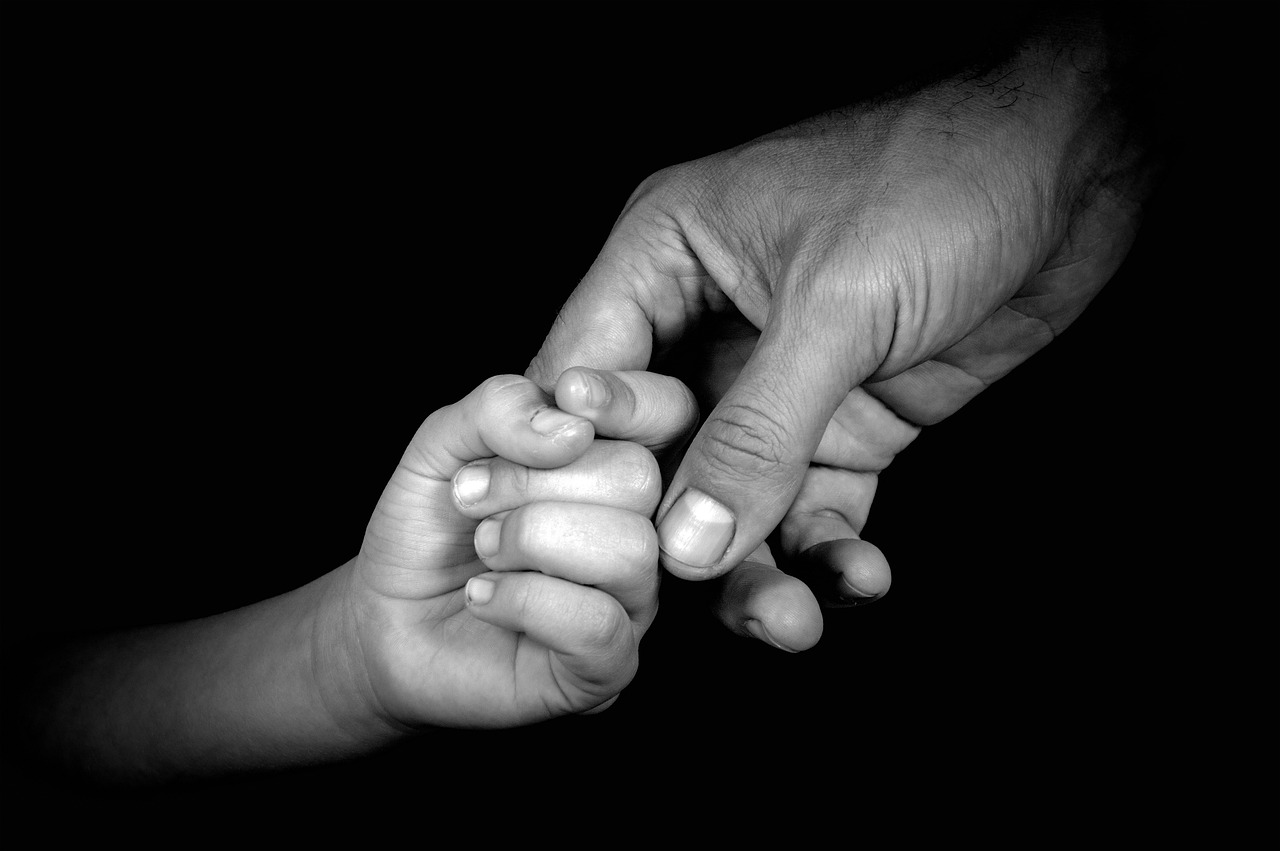
Seeking Support
Dealing with harassment on Instagram can feel like an uphill battle, but you don't have to face it alone. Finding support from friends, family, or professional resources can be a game changer when you're navigating the murky waters of online abuse. It’s essential to remember that you are not just a victim; you are someone who deserves to be heard and supported. Reaching out to trusted individuals can provide a sense of relief and validation, making it easier to cope with the emotional toll that harassment can take.
When you share your experiences with those you trust, you open the door to empathy and understanding. Friends and family can offer comfort and advice, helping you feel less isolated. They might even share their own stories of dealing with online negativity, which can remind you that you're not alone in this fight. It’s like standing together with a shield against the arrows of trolls and creeps.
Moreover, building a support network can be incredibly beneficial. This network can consist of:
- Close Friends: They can provide emotional support and help you navigate through tough situations.
- Online Communities: Joining forums or groups where others share similar experiences can create a sense of belonging.
- Professional Help: Sometimes, talking to a counselor or therapist can provide you with tools to deal with harassment effectively.
In some cases, the harassment might escalate to a point where professional resources become necessary. This could include legal advice or counseling services. Many organizations specialize in supporting victims of online harassment, offering everything from legal counsel to emotional support. It's important to know that there are professionals out there who understand what you're going through and can guide you through the process of reclaiming your online space.
Don’t hesitate to seek out these resources if you feel overwhelmed. The right support can empower you to take back control and ensure that your online experience is safe and enjoyable. Remember, reaching out is a sign of strength, not weakness. It’s okay to ask for help when you need it, and doing so can lead to a more positive online experience.
| Question | Answer |
|---|---|
| What should I do if I receive threatening messages? | Immediately report the user to Instagram and consider blocking them. Save the messages as evidence. |
| How can I find support groups for online harassment? | Look for online forums, social media groups, or local community centers that focus on mental health and online safety. |
| Is it worth talking to a therapist about online harassment? | Absolutely! A therapist can provide coping strategies and emotional support tailored to your situation. |
| Can I take legal action against my harasser? | Yes, if the harassment is severe, consult with a legal professional to explore your options. |
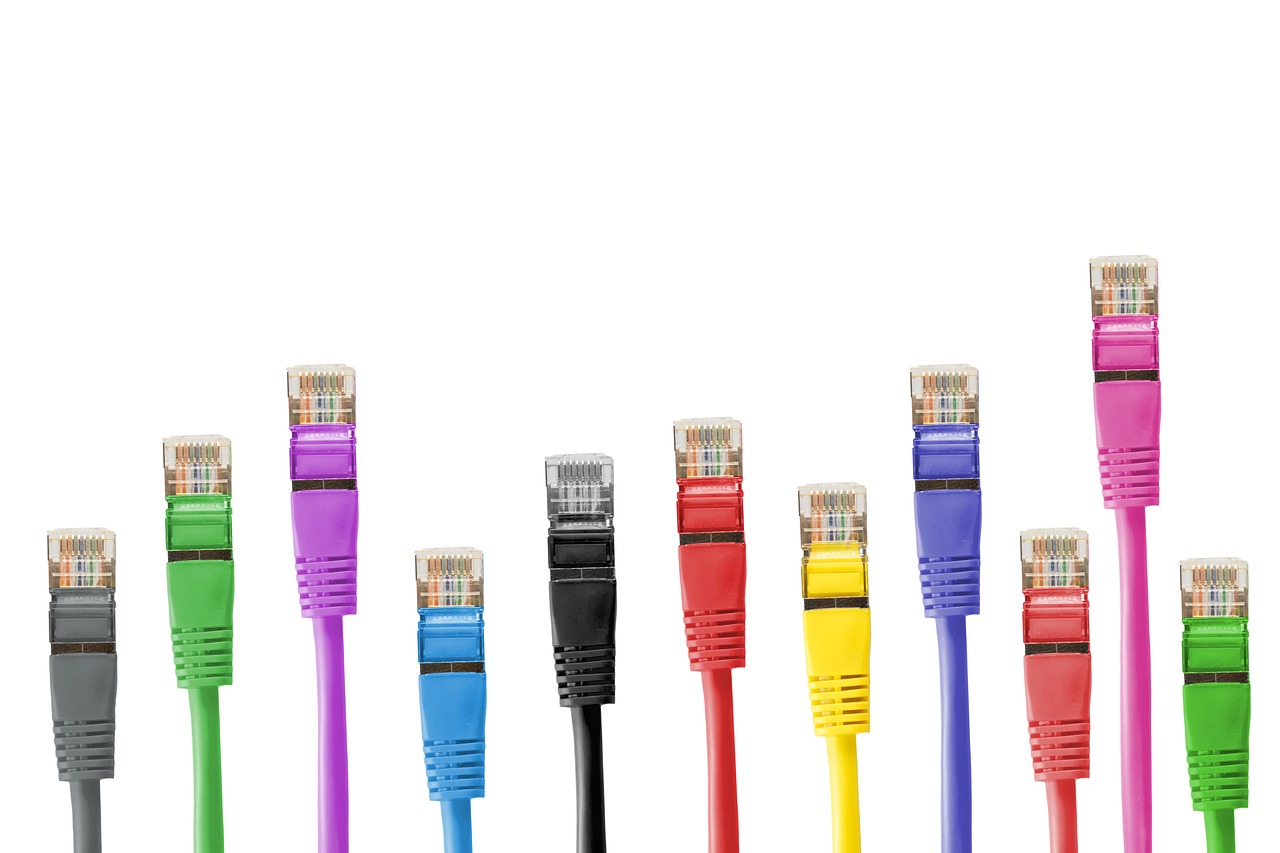
Building a Support Network
Creating a strong support network is essential when navigating the tumultuous waters of online harassment. Think of it as building a fortress around yourself, where the walls are made up of trusted friends, family, and even online allies who can provide emotional and practical support. When you face harassment, it can feel isolating, as if you’re fighting a battle alone. However, having a reliable support system can make all the difference, transforming that feeling of isolation into a sense of belonging and strength.
To start, consider reaching out to those in your life who you trust and feel comfortable confiding in. This could be a close friend, a family member, or even a colleague who understands the online landscape. Sharing your experiences with them not only helps to alleviate the burden but also opens the door for them to provide support and advice. You might be surprised to discover that they have faced similar challenges and can share their coping strategies with you.
In addition to personal connections, think about joining online communities or support groups that focus on the issue of online harassment. These platforms can be a treasure trove of resources and shared experiences. Engaging with others who have faced similar challenges can provide validation and further strategies for dealing with harassment. Whether it’s a Facebook group, a forum, or even a dedicated Instagram account, these communities can foster a sense of camaraderie and understanding.
Moreover, it’s essential to remember that building a support network isn’t just about seeking help; it's also about being there for others. By sharing your story and offering support to those in similar situations, you create a ripple effect of positivity and resilience. This mutual support can help to dismantle the stigma surrounding online harassment and encourage others to speak out.
Here are a few key steps to consider when building your support network:
- Identify Trusted Individuals: Make a list of people in your life who you can trust. Reach out to them and let them know what you’re experiencing.
- Engage with Online Communities: Look for groups or forums where you can share your experiences and seek advice.
- Offer Support: Don’t hesitate to lend an ear to someone else going through a similar situation. Your experience might help them feel less alone.
- Utilize Professional Resources: Sometimes, professional help can provide the support you need. Consider counseling or therapy as an option.
In conclusion, building a support network is not just a safety net; it’s a powerful tool that can help you regain control and confidence in your online interactions. Remember, you’re not alone in this fight. By surrounding yourself with supportive individuals, you can create an environment that fosters positivity and resilience, making it easier to navigate the challenges of online harassment.
Q1: How do I know if someone is harassing me online?
A1: Signs of online harassment include persistent unwanted messages, threats, or derogatory comments. If you feel uncomfortable or threatened, it's essential to take it seriously.
Q2: What should I do if I receive threatening messages?
A2: Document the messages, block the sender, and report them to the platform. Don't hesitate to reach out to someone you trust for support.
Q3: Can I report impersonation accounts on Instagram?
A3: Yes! You can report impersonation accounts by going to the profile, clicking on the three dots in the top right corner, and selecting 'Report' to follow the prompts.
Q4: How can I protect my privacy on Instagram?
A4: Adjust your privacy settings to limit who can see your posts and send you messages. Consider making your account private to control your audience.
Q5: Is it okay to seek professional help for online harassment?
A5: Absolutely. Seeking help from a counselor or therapist can provide you with the tools and support needed to cope with the emotional impact of harassment.

Professional Resources
When dealing with the emotional and psychological toll of online harassment, sometimes it becomes essential to seek help beyond just friends and family. Professional resources can provide invaluable support, guidance, and tools to help individuals navigate through the challenges posed by trolls and creeps. Whether you're facing mild discomfort or severe distress, there are various avenues to explore.
First and foremost, counseling services can be a great starting point. Licensed therapists can help you process your feelings and develop coping strategies tailored to your unique situation. Many therapists specialize in trauma and can offer insights into managing anxiety and fear stemming from online harassment. It's crucial to find someone who understands the dynamics of digital harassment and can provide a safe space for you to express your thoughts and emotions.
In addition to counseling, there are several hotlines and support groups that focus specifically on online harassment and cyberbullying. These resources can offer immediate assistance and connect you with others who have gone through similar experiences. Here are a few notable options:
- The National Domestic Violence Hotline: Provides 24/7 support for individuals facing various forms of abuse, including online harassment.
- Cyber Civil Rights Initiative: Focuses on combating online harassment and provides resources for victims of non-consensual pornography and cyberstalking.
- StopBullying.gov: Offers resources for both victims and bystanders, aiming to educate and empower individuals against online bullying.
Moreover, if the harassment escalates to a level that feels threatening or unsafe, it may be necessary to consult with legal professionals. Lawyers specializing in internet law can help you understand your rights and may assist in taking legal action against the harassers. This could involve filing restraining orders or pursuing civil lawsuits, depending on the severity of the situation. Many legal aid organizations offer free consultations, so it's worth exploring these options if you feel overwhelmed.
Lastly, remember that seeking help is a sign of strength, not weakness. It’s essential to surround yourself with supportive individuals who respect your experiences and encourage you to take proactive steps toward healing. By leveraging professional resources, you can reclaim your sense of safety and well-being in the digital world.
Q: What should I do if I feel overwhelmed by online harassment?
A: It’s important to reach out for help. Consider speaking to a mental health professional or a trusted friend who can provide support. You can also contact hotlines for immediate assistance.
Q: How can I find a therapist who understands online harassment?
A: Look for therapists who specialize in trauma or cyberbullying. Websites like Psychology Today allow you to filter therapists by their areas of expertise.
Q: What legal actions can I take against my harasser?
A: Depending on the severity of the harassment, you may be able to file a restraining order or pursue a civil lawsuit. Consulting with a lawyer who specializes in internet law can provide clarity on your options.
Q: Are there support groups available for victims of online harassment?
A: Yes, many organizations offer support groups for individuals facing online harassment. These can provide a safe space to share experiences and learn coping strategies from others.
Frequently Asked Questions
- What constitutes online harassment on Instagram?
Online harassment on Instagram can include a variety of abusive behaviors such as trolling, stalking, unwanted messages, and impersonation. It's important to recognize these behaviors early to protect yourself and maintain a safe online environment.
- How can I identify if someone is a creep or troll?
Creeps and trolls often exhibit specific behaviors, such as sending unsolicited messages, making inappropriate comments, or creating fake accounts. Being aware of these traits can help you spot potential threats before they escalate.
- What should I do if I experience cyberstalking?
If you believe you are being cyberstalked, it's crucial to document the behavior, adjust your privacy settings, and utilize Instagram's blocking and reporting tools. Seeking support from friends or professionals can also be beneficial.
- How can I adjust my privacy settings on Instagram?
You can adjust your privacy settings by going to your profile, tapping on the three lines in the top right corner, selecting 'Settings', and then 'Privacy'. Here, you can control who can see your posts, who can comment, and more, helping to limit exposure to potential harassers.
- What are the steps to block and report someone on Instagram?
To block someone, go to their profile, tap the three dots in the top right corner, and select 'Block'. To report them, tap the same three dots and choose 'Report'. Following these steps can help protect you and contribute to a safer community.
- Why is it important to seek support when facing harassment?
Reaching out for support from friends, family, or professionals can provide emotional strength and reassurance. Sharing your experiences can alleviate feelings of isolation and help you navigate the situation more effectively.
- How can I build a support network?
Building a support network involves connecting with friends, family, or online communities that understand your situation. Engaging in open conversations and sharing experiences can foster a sense of security and reassurance during difficult times.
- When should I consider professional help for harassment?
If the harassment escalates or significantly impacts your mental health, seeking professional help may be necessary. Counselors or legal advisors can provide guidance and support tailored to your specific situation.



















